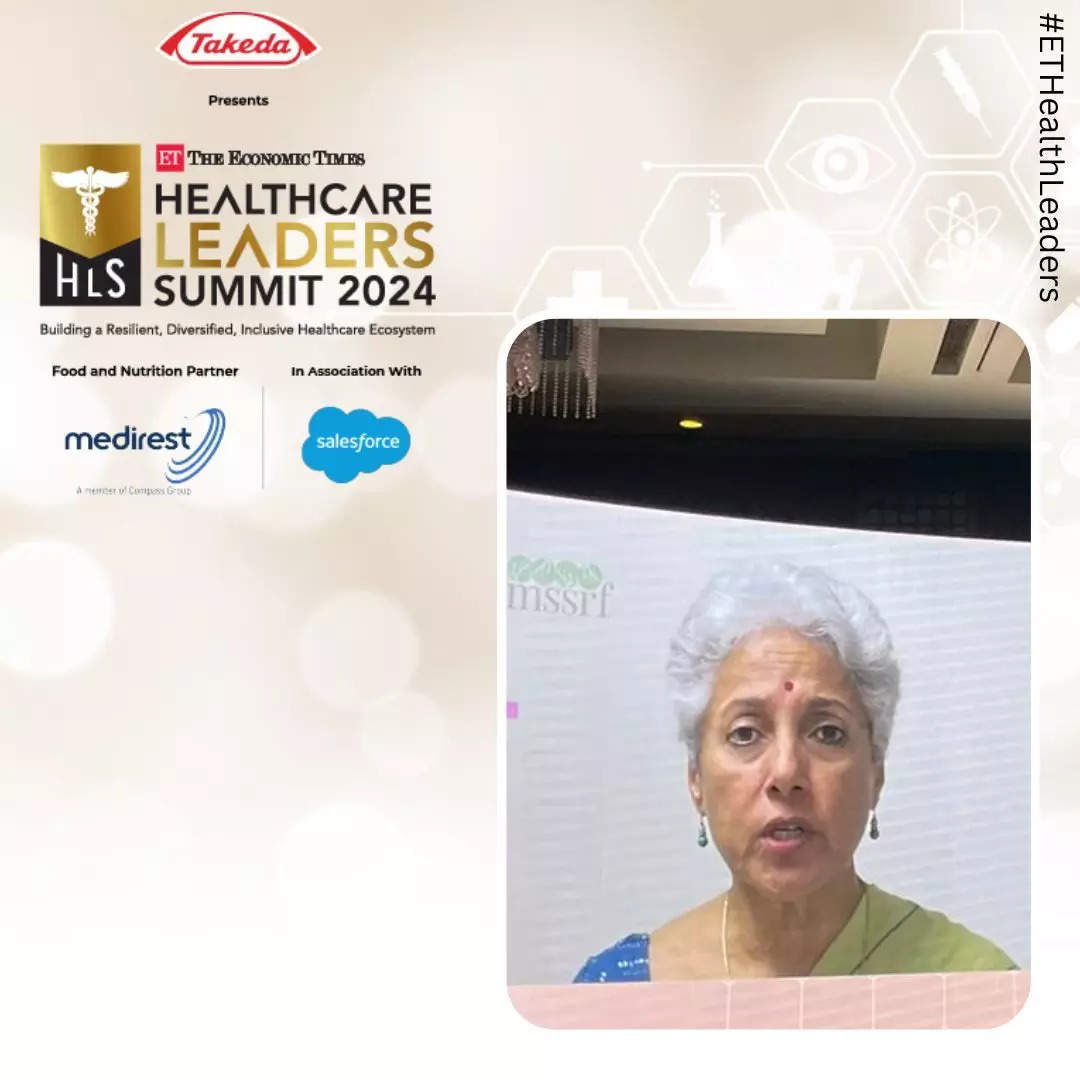
At the fourth Economic Times Healthcare Leader Summit held last week in New Delhi, Dr Soumya Swaminathan, former chief scientist at the World Health Organization and chairperson, M S Swaminathan Research Foundation listed a set of comprehensive action points that must form the backbone to build an inclusive and resilient healthcare system in India.
Among the key highlights, Dr. Swaminathan spoke about a slowing trend in healthcare service delivery across the world since 2015, accentuated by the Covid pandemic, which delayed essential healthcare services such as immunization efforts, essential surgeries, and cancer treatments. In addition, she detailed how the poorest, the lowest income strata of the population, is pushed to poverty due to catastrophic health expenditure and therefore the need for the private sector to expand presence into community and primary care.
Here are the key extracts of her speech, delivered in presence of senior government representatives and those from private sector enterprises drawn from the country’s leading hospitals, health technology players and medical device companies.
More frequent pandemic threats and climate shocks on healthcare:
We know without health we cannot achieve anything. The pandemic showed very clearly the economic damage that a virus can inflict on the world economy that runs into trillions of dollars. That phenomenon is expected to happen more frequently in the future.
Shocks of climate change are seen from frequent floods, heat waves, droughts, cyclones and so on. It is estimated that 75 per cent of Indian districts and almost 80 per cent of the population is exposed to climate hazards and shocks and are therefore vulnerable. Climate change impacts our health in many ways directly and indirectly.
We recently conducted a study on the impact of climate change on women and children and the effects it can have on livelihood and education. We have submitted our report to the health ministry in July. It showed various negative impacts like under nutrition, earlier age at marriage, increased domestic violence and reduced access to health services. This is not just after acute disasters like a flood or drought but also when there is a longer change in the climate like recurrent floods or heat waves. Those who suffer are also people who are at the extreme socio-economic bottom of the pyramid.
On the big question of inclusive or equitable healthcare:
That brings the question of health equity and bringing equity at the centre of our health system. That will make a strong and resilient health system. We must start to look at the baseline. The parameter that we use are that used by the World Health Organization. Under the Universal Health Coverage that is indicator 3.8 of the sustainable development goals (SDG), we have two aspects to it – service delivery and financial risk protection or out-of-pocket expenses.
Under the service delivery, the world had made good progress, but that progress got stalled after 2015. Till that time there was rapid progress and service coverage increased in most parts of the world but following that it plateaued and after COVID, we saw there was disruption in essential health services. We saw diseases like tuberculosis increase in incidence and mortality after many years of decline. Everything took a hit – immunization programs, cancer treatment, essential surgeries.
So, one point is to focus on service delivery and extending access to all healthcare services, which is what the government is trying to do through the Ayushman Bharat scheme and strengthening the primary health care services. The other arm of Ayushman Bharat is insurance coverage up to five lakh rupees per family and now extended to all senior citizens above the age of 70 years, which is a very welcome step.
There is a lot of work that is done recently by the World Health Organisation (WHO) and its partners on how to define catastrophic health expenditures. If one spends ten percent or more of the monthly expenditure on health, it is called catastrophic, but it depends on the income levels. If someone is earning a lot than that ten percent, although still a lot, can be seen as part of a bigger income but for a poor household spending most of the income on essentials like food, housing and health and education, that can lead to catastrophic proportion and push people into poverty. That probably can be explained well by economists.
The point is even today 50 per cent of Indians are seeing out-of-pocket expenditure on health and that is detrimental to their quality of life, that includes steps like taking children out of school or mortgage their house. That is still a very significant number.
On public-private handshake:
What can public and private sector do? Private sector is delivering health services. But if that is pushing more and more people to poverty then that is not the result that we want. So, the stewardship must come from the government, the leadership has to come from the government, and everybody has to operate within that system.
There are the two arms again – providing services through primary healthcare. In countries like Thailand, we have seen private sector take a community role for delivery of private health services and is responsible and accountable for health outcomes. In India we need to see the health outcomes of the poorest to improve. If we see the health data, we can immediately see the differences in standards like infant mortality or malnutrition or access to health services. Those differences need to narrow to see an equitable health system. Everybody needs to have access to quality healthcare.
On leveraging better technology:
We have trained people in India. Again, infrastructure and connectivity has become better. Also most importantly, the digital health infrastructure has improved and made enormous changes to the lives of people. I do not see the digital public infrastructure really contributing to the health sector as it has in other fields. The challenge is how to use it innovatively to deliver quality health services to people. We need a tech-enabled health workforce like integrating across different streams and make sure that referrals are happening. We need to see that health promotion and disease prevention happens.
How do we pick up outbreaks early enough through community level surveillance. There are recent outbreaks in different states that are of unknown origin, there is the Chandipura virus, and we have seen Nipah as well. Dengue and chikungunya of a new strain is being seen in India. We need to have data from ground up, and that needs to be of high quality and disseminated and used for action. There are some weak links that need to be strengthened. We need to leverage the investments that the government has made in digital infrastructure and take it to the next level.
On measurable outcomes:
Ultimately, we must have systems that can measure outcomes and the health system resilience. We do have the health surveys periodically every five years. There is no doubt a lot has improved. There is a shift between reduction in communicable diseases and maternal and child health issues towards non-communicable diseases. We have a population that is living longer, and so degenerative diseases will see an increase. The burden of chronic diseases will increase and therefore this is the time to really think very proactively on how we want to tackle issues like aging-related diseases. India’s huge size is again important to keep in mind. There are some states that have better health systems, but I think we can do a leapfrogging now because we have the technology and people. We need more innovations. Our health system research needs more innovation and there the public-private partnerships can help.




